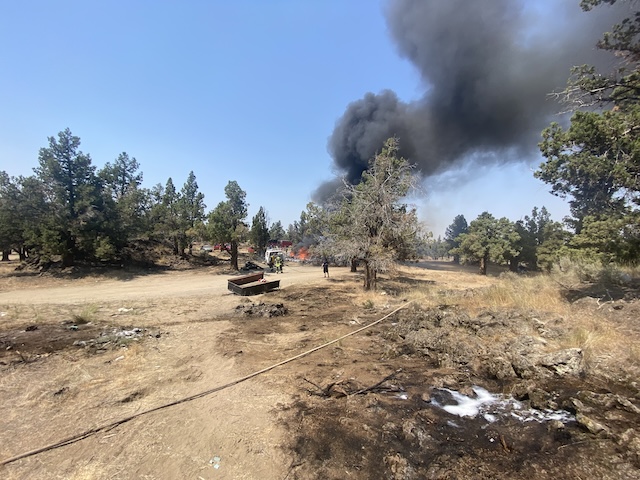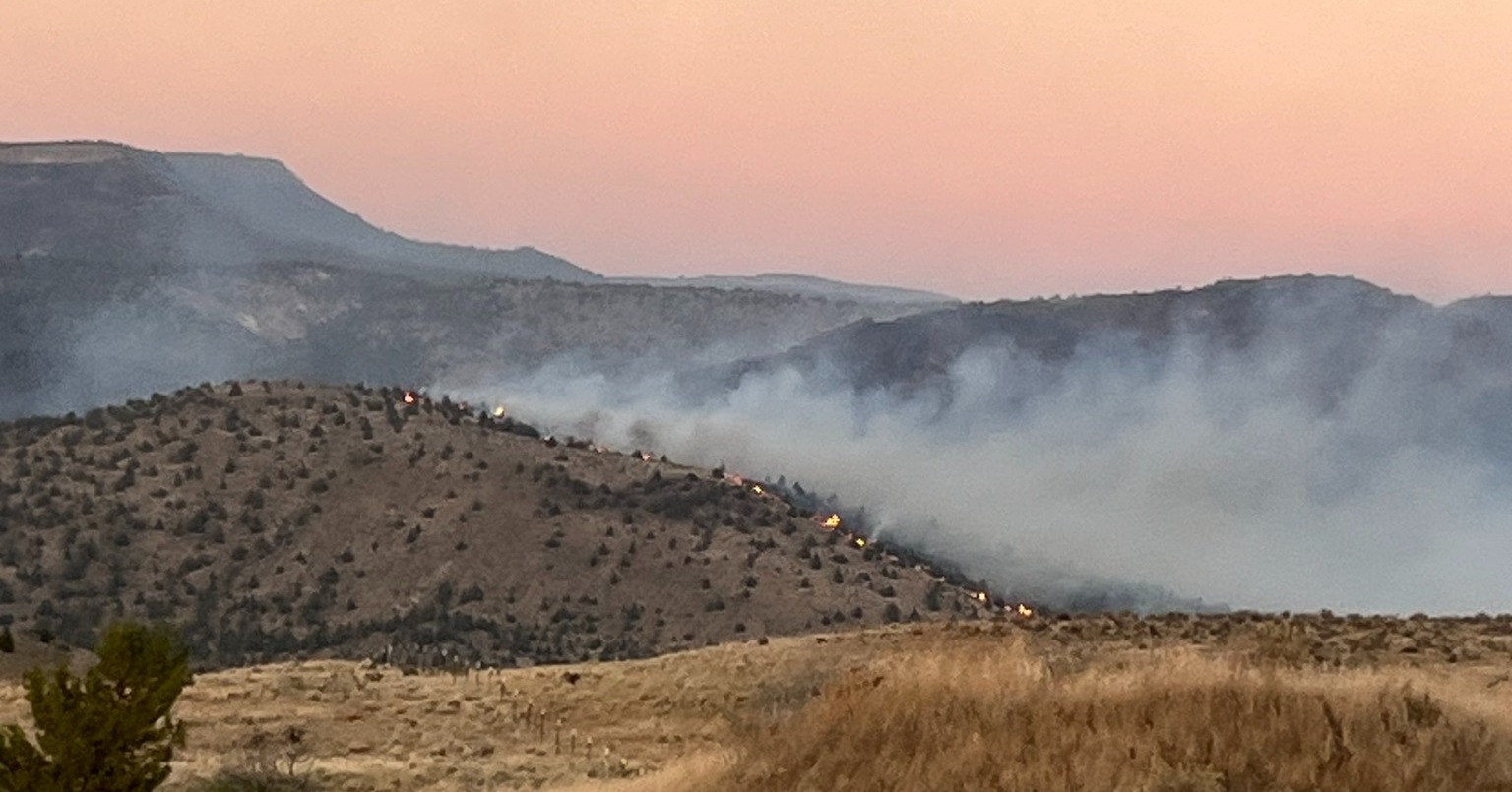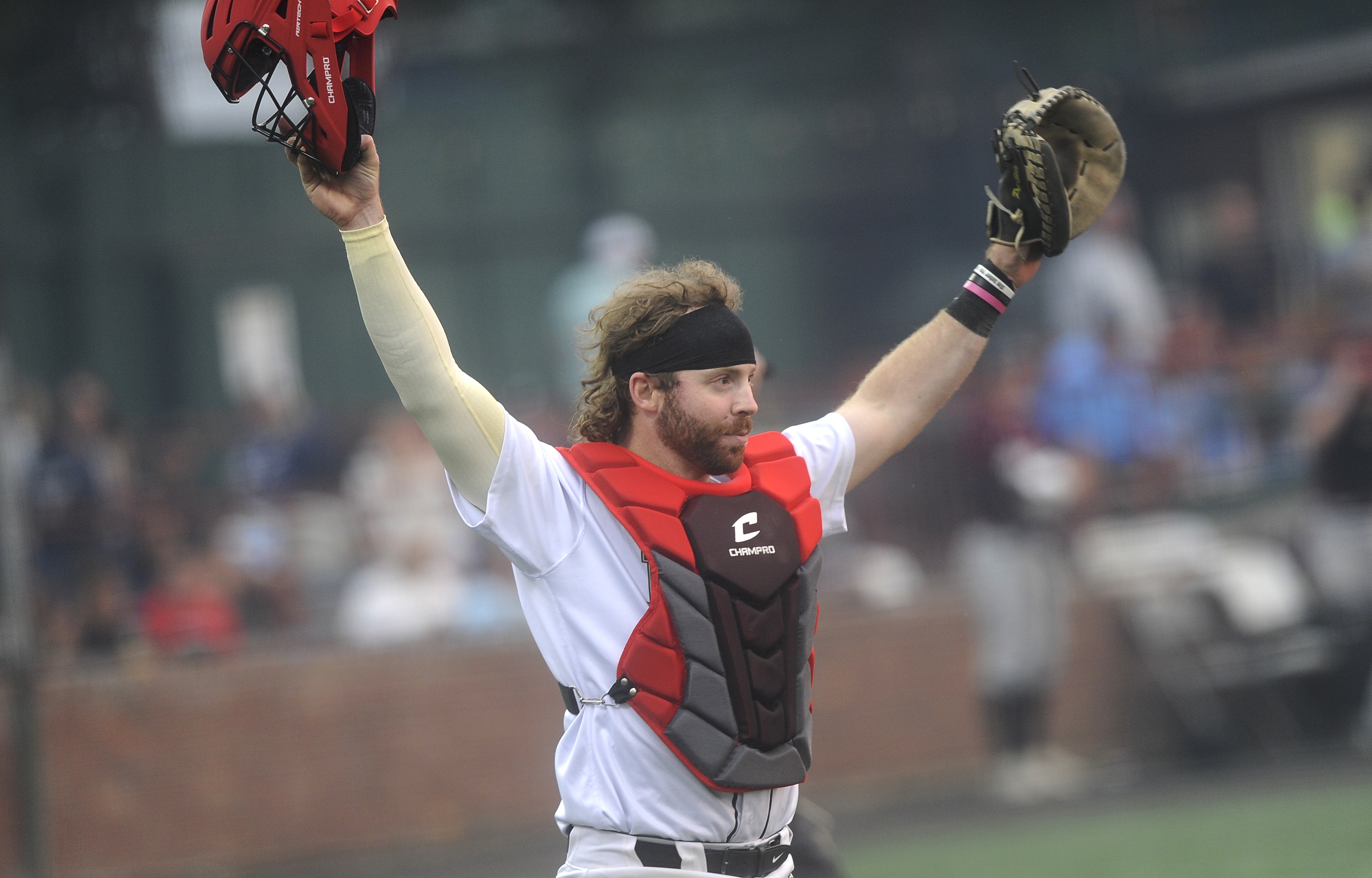Travel: Newport hosts seafood, wine fest
Published 7:31 am Friday, March 14, 2014

- Barb Gonzalez / For The Bulletin The Yaquina Bay Bridge spans the mouth of Yaquina Bay, linking downtown Newport to its South Beach neighborhood. Every year on the last full weekend of February, giant tents set up on its southeast side for the Newport Seafood & Wine Festival.
NEWPORT — When more than five dozen wineries from across the Pacific Northwest vied for the “best of show” honor at the 2014 Newport Seafood & Wine Festival, few participants might have expected that the winner would be a tiny cliff-top enterprise just a few miles up the road.
But when the bottles had been recorked and the wine stains removed from the tasting-room floor, a 2006 Syrah from the Flying Dutchman Winery ruled supreme.
Trending
“It was a pleasant surprise,” said Dan High, Dutchman’s sales manager and assistant winemaker.
More than two dozen varietals and blends, most of them from Oregon, were recognized by festival judges for their outstanding character. Pinot noirs and chardonnays dominated. But it was the local syrah that earned top marks in the blind tasting.
High poured. I sipped. I liked.
“It’s everything good,” said High. “It’s big, bold and peppery, with good clarity and fruit up front.” A difference-maker, High assured me, was the winery’s method of “salt-air fermentation.”
Although there was plenty to see and do at the 37th annual Seafood & Wine Festival, my curiosity was piqued. As a wine aficionado, I had to discover what this process was all about. So I detoured away from the festival floor and headed for Otter Rock.
Salt-air wines
Trending
The Flying Dutchman is a humble establishment, located near the end of a dead-end road beside Devil’s Punchbowl State Natural Area. The rustic yellow clapboard house, 8 miles north of Newport and a quarter-mile detour off U.S. Highway 101, is in unincorporated Otter Rock, where an isolated community has stood for more than a century. The actual rock, named for sea otters once resident there, is about a half-mile offshore; the village is atop a bluff that extends seaward, with views up and down the often-blustery coast.
Immediately north of the winery — practically out its back door — the Pacific Ocean churns violently within the Devil’s Punchbowl. This large natural bowl, which geologists believe was carved by tides following the collapse of a pair of sea caves in the rocky headland, has an open side just large enough to admit waves. They foam and swirl and send eruptions of saltwater spray high into the maritime sky, keeping the Punchbowl in a state of almost continuous turbulence.
Dick Cutler, whom High calls “Dr. Vino,” is the winery’s 80-year-old founder, owner and head winemaker. Back in 1997, Cutler began making wines as a hobby when he was the manager of the nearby Inn at Otter Crest’s restaurant, an establishment called the Flying Dutchman after a mythical ship. Three years ago, he relocated his operation to a nondescript and weather-beaten cabin, the last structure but one on the rocky point. (Its neighbor, Mo’s West, a little chowder house, is open seasonally — and this is not the season.)
Every day but Christmas, the Flying Dutchman Winery is open for tours and tastings. The wine list extends through five varietals and two blends, their grapes coming from five different Oregon vineyards at which Cutler leases rows. They’re all available for sale here by the bottle, along with a couple of berry wines and numerous gift items.
To understand the “salt-air fermentation” that adds distinction to Flying Dutchman wines, a visitor need only peek behind the building: During the cold-soak and fermentation processes, red grapes lie in tanks left open to the sea spray. This factor, and lower seaside temperatures, extends the fermentation period to two or three times that of inland facilities.
“We feel that makes it unique,” Cutler said. “I don’t know if it makes it better, but it makes it different, and that seems to be what people like.”
The award-winning 2006 Syrah, whose grapes were harvested from the Umpqua Valley’s Freed Estate, was bottled in 2008 after two years in oak casks. Cutler didn’t release it as scheduled in 2012; instead, he waited an extra 12 months for its complex tannin structure to “settle down.”
“It just kept on getting a little better,” he said.
Cutler said he has been entering the Newport competition since 1998, and this is his first win. “It’s among friends, and it means a lot,” he said. And High, who has partnered with Cutler since 2004, echoed that sentiment. “Word of mouth is the best form of advertising,” he said. “And we’re proud of what we do.”
Fish and crafts
In fact, the Newport Seafood & Wine Festival is much more about wine than it is about seafood, although it may not have started out that way.
First held in 1978 in Newport’s National Guard Armory, the festival grew year by year, until it was moved first to an exhibition hall at the marina, and in the late 1990s to the South Beach neighborhood beneath the Yaquina Bay Bridge. The four-day festival remains there today, next to the headquarters of Rogue Ales & Spirits, filling a set of giant, conjoined, canvas tents. Now it draws more than 20,000 people to the city of fewer than 10,000 each year on the last full weekend in February.
This year’s event was the first I have attended. About 150 booths were filled with seafood vendors, crafts people and winemakers, and they were open for business for four straight days, from Thursday afternoon until it was time to go home on Sunday.
If anything disappointed me, it was the sparse number of seafood sellers. In fact, despite the festival’s name, fewer than half of the 30 food vendors on site were actually offering seafood in one form or another. While I enjoyed much of what was offered, especially a generous, fresh crab cocktail from Naturally NW Seafoods (based in nearby Toledo), I really had expected more.
Shellfish from the Oregon Oyster Farms, just upriver, was good but pricey. Sushi from a local Bayfront restaurant was fine but not exceptional. Shrimp plates and clam chowder were readily available, but a little more finned fish, and a little less candy, would have been nice. Even the presenting sponsor of the event, Lincoln City’s Chinook Winds Casino Resort, offered friends and family steak and pork-belly entrees at a special dinner, with salmon and crab bisque a seeming afterthought.
The crafts people, who also numbered about 30, were fine, but no more so than at a street fair. Blown sea glass, jewelry, ceramics, woodwork, hand-knit clothing, paintings, photography, even gourmet foods were part of the mix. But probably no booth got as much attention as Crispin’s Import Gallery, a Tigard-based company that sold all manner of novelty seafood hats — gaudy crabs, fish and octopi, for instance — that were ubiquitous throughout the festival tents.
Wine lovers
Still, this festival was about wines. In all, about 80 wineries participated, the vast majority Oregonian, a few from Washington and Northern California. And it wasn’t just about winning awards.
When you’re competing against 550 wineries in Oregon alone, 400 of them in the Willamette Valley, any opportunity for exposure is a good investment. Having 20,000 imbibers sample a few sips of wine is cheap advertising, especially when they are spending a dollar or two for every taste.
But 61 wineries did enter between one and three bottles in the commercial wine competition, 169 bottles in all. And 118 of them came away as winners of gold, silver or bronze awards. Pinot noirs (19 awards, including seven golds) and chardonnays (10 awards, including five golds) were the most exalted Northwest wines, but more than two dozen varietals and blends — including 15 reds, eight whites and several sparkling and dessert wines — were honored, demonstrating the breadth of the winemaking industry in this region.
Among the winners was Bend-based winemaker O. Jay Merrill, whose Merrill Cellars 2011 viognier won a silver medal in the competition, and whose 2008 syrah took a bronze. Both wines are produced in Southern Oregon.
What I learned in my first go-round at the Seafood & Wine Festival, however, was that WHEN you go is more important than THAT you go. That’s partially a factor of the relative proximity of Corvallis and Oregon State University, a mere hour’s drive (52 miles) away. Hundreds of barely-21 college students turn a Saturday drive to the coast into a bacchanalian frenzy that clogs the passageways between booths.
Locals know — and you should, too — that the best times to visit the festival are any day but Saturday (when the tents are open from 10 a.m. to 6 p.m.).
I found Thursday night (5 to 9 p.m.) ideal: Crowds were minimal and there were plenty of opportunities to converse with winemakers and other merchants. Friday (noon to 9 p.m.) wasn’t bad either, especially during the afternoon, before the weekend crowd began to arrive.
Sunday (noon to 6 p.m.) still suffered some crowds, but if you’re looking to buy cases (not individual bottles) of wine, this is a good time to deal. Vendors prefer to leave the festival with as little merchandise as possible, so they may be willing to offer great deals.
One thing that the Seafood & Wine Festival misses is live music. Having a radio station pump up the volume is not the same as encouraging talented Oregon artists to perform. I have to believe there’s an opportunity here to add a stage and dance floor in an adjoining tent.
Out and about
Two of Newport’s biggest attractions — the Oregon Coast Aquarium and the Hatfield Marine Science Center — are both a short walk from the festival tents in the South Beach area. Either, or both, offers a great afternoon diversion for attendees looking for a break in their wine tasting.
The aquarium, established in 1992, has been honored by national media as one of the 10 best in the United States. The permanent collection of 15,000 specimens, representing 250 species, is drawn entirely from Oregon coastal waters. The central exhibit is a 200-foot acrylic tunnel that passes through a 1.3 million-gallon tank divided into three sections: offshore reef and kelp forest, rocky-bottom shipwreck and open sea. A walkway is suspended through its heart, giving visitors the sense that they are walking through the middle of the ocean.
The adjacent Hatfield Marine Science Center, operated by Oregon State University, is a perfect complement. There are few resident animals — a giant Pacific octopus that greets visitors is the largest — but there are myriad morsels of scientific intrigue. There’s an exhibit on the migratory behavior of whales, for instance, as well as elaborate models exploring climatic mysteries like El Niño and predicting the impact of undersea volcanic eruptions. Other exhibits consider modern conservationists’ focus on promoting sustainable fisheries.
But for visitors who really want to know something about the history of the local fishing industry, the exhibits at the new Pacific Maritime & Heritage Center are unsurpassed. Opened last June in a historic home that overlooks the east end of the bay front, this museum — still in expansion mode — has exhibits on commercial and sport fishing, galleries of photography and art, and numerous other displays. A current presentation tells the story of a Cold War-era joint venture between Russian and American fishermen, a cooperative endeavor that extended from 1978 to 1990.
— Reporter: janderson@bendbulletin.com
To understand the “salt-air fermentation” that adds distinction to Flying Dutchman wines, a visitor need only peek behind the building: During the cold-soak and fermentation processes, red grapes lie in tanks left open to the sea spray. “We feel that makes it unique,” the winery’s founder says. “I don’t know if it makes it better, but it makes it different, and that seems to be what people like.”
If you go
All addresses in Newport
Information
• Newport Chamber of Commerce. 555 S.W. Coast Highway; 541-265-8801, 800-262-7844, www.discovernewport.com.
Lodging
• Anchor Pier Lodge. 345 S.W. Bay Blvd.; 541-265-7829, www.anchorpierlodge.com. Rates from $125.
• Best Western Plus Agate Beach Inn. 3019 N. Coast Highway, Agate Beach; 541-265-9411, 800-547-3310, www.agatebeachinn.com. Rates from $110.
• Sylvia Beach Hotel. 267 N.E. Cliff St., Nye Beach; 541-265-5428, 888-795-8422, www.sylviabeachhotel.com. Rates from $85.
• The Whaler. 155 S.W. Elizabeth St.; 541-265-9261, 800-433-9444, www.whalernewport.com. Rates from $107.
Dining
• Cafe Stephanie. 411 Coast St., Nye Beach; 541-265-8082, www.facebook.com. Breakfast and lunch every day. Budget.
• Chalet Restaurant & Bakery. 2026 N. Coast Highway.; 541-265-6900, www.chaletrestaurantandbakery.com. Three meals every day. Budget to moderate.
• The Deep End Cafe. 740 W. Olive St., Nye Beach; 541-264-8672, www.thedeependcafe.com. Lunch and dinner. Moderate.
• Georgie’s Beachside Grill. 744 S.W. Elizabeth St.; 541-265-9800, www.georgiesbeachsidegrill.com. Three meals every day. Moderate.
• Local Ocean Seafoods. 213 S.E. Bay Blvd.; 541-574-7959, www.localocean.net. Lunch and dinner. Moderate to expensive.
• Newport Cafe. 534 N. Coast Highway.; 541-574-6847, www.thenewportcafe.com. Open 24 hours a day. Budget to moderate.
Attractions
• Flying Dutchman Winery. 915 S.W. First St., Otter Rock; 541-765-2553, www.dutchmanwinery.com.
• Hatfield Marine Science Center. 2030 S.E. Marine Science Drive; 541-867-0100, www.hmsc.oregonstate.edu.
• Oregon Coast Aquarium. 2820 S.E. Ferry Slip Road; 541-867-3474, www.aquarium.org.
• Pacific Maritime & Heritage Center. 333 S.E. Bay Blvd.; 541-265-7509, www.oregoncoasthistory.org. (Affiliated with Burrows House Museum, 545 S.W. Ninth St.)
Expenses
• Gas, Bend to Newport, 374 miles (round-trip) at $3.25/gallon $48.62
• Admission, Newport Seafood & Wine Festival (3-day pass) $35
• Dinner, festival booths $15
• Lodging (3 nights), Best Western Agate Beach $361.97
• Breakfast, Cafe Stephanie $11.71
• Lunch, festival booths $8
• Dinner, Deep End Cafe $32.50
• Breakfast, Newport Cafe $13.95
• Admission, Lincoln County Historical Society $5
• Lunch, Local Ocean Seafoods $20
• Dinner, Georgie’s Beachside Grill $32.87
• Breakfast, Chalet Restaurant & Bakery $12.99
TOTAL $597.61








